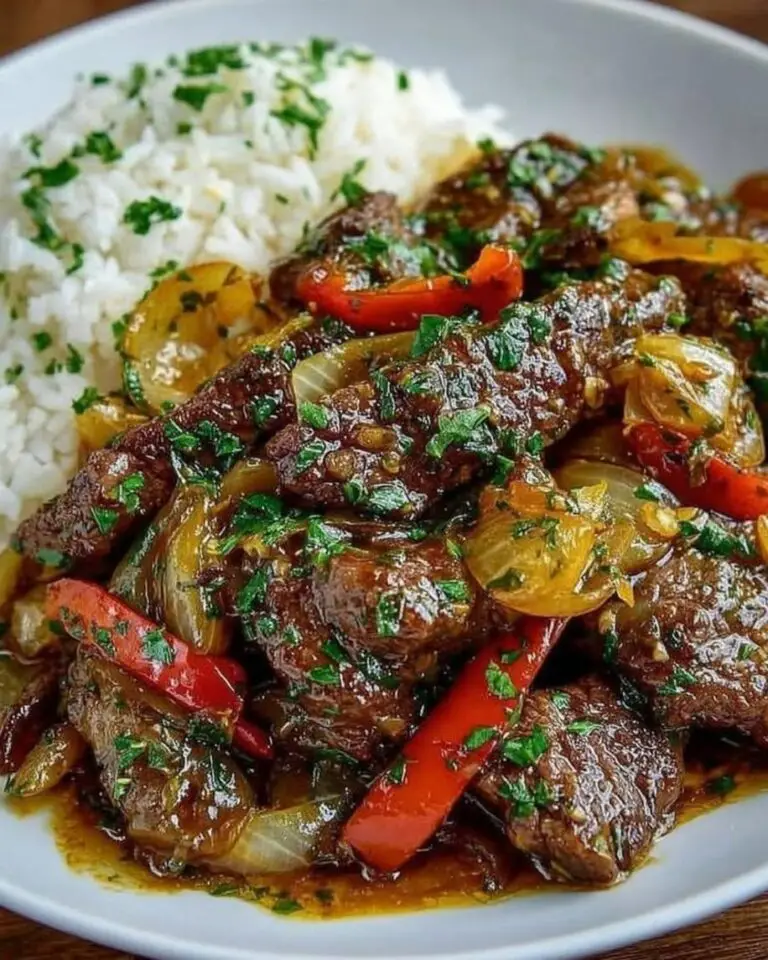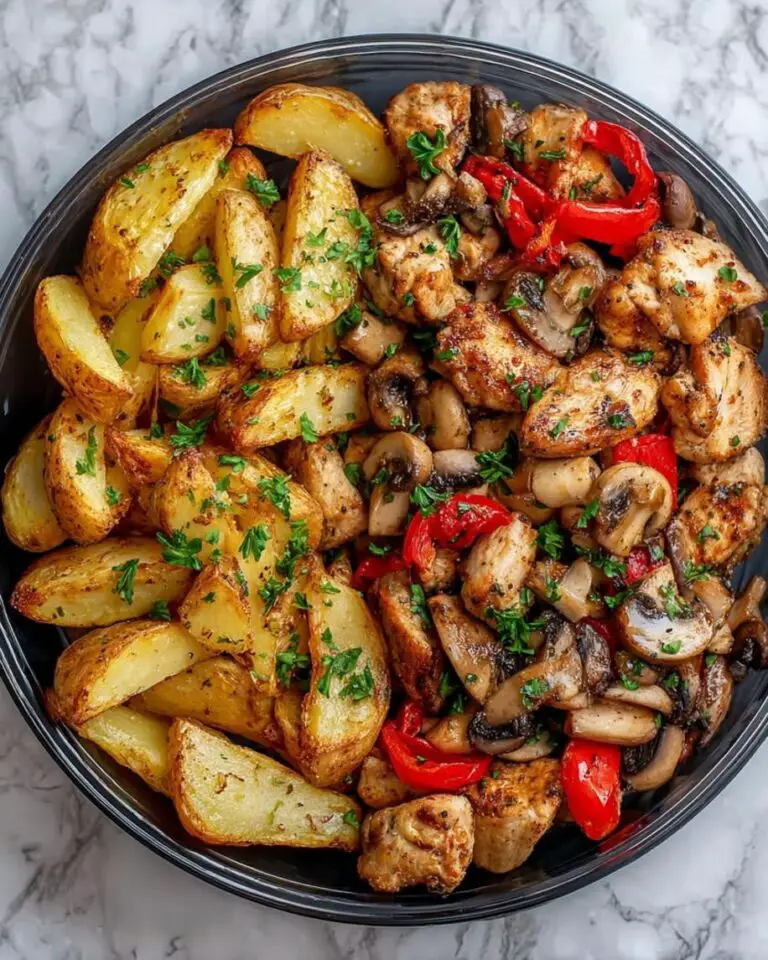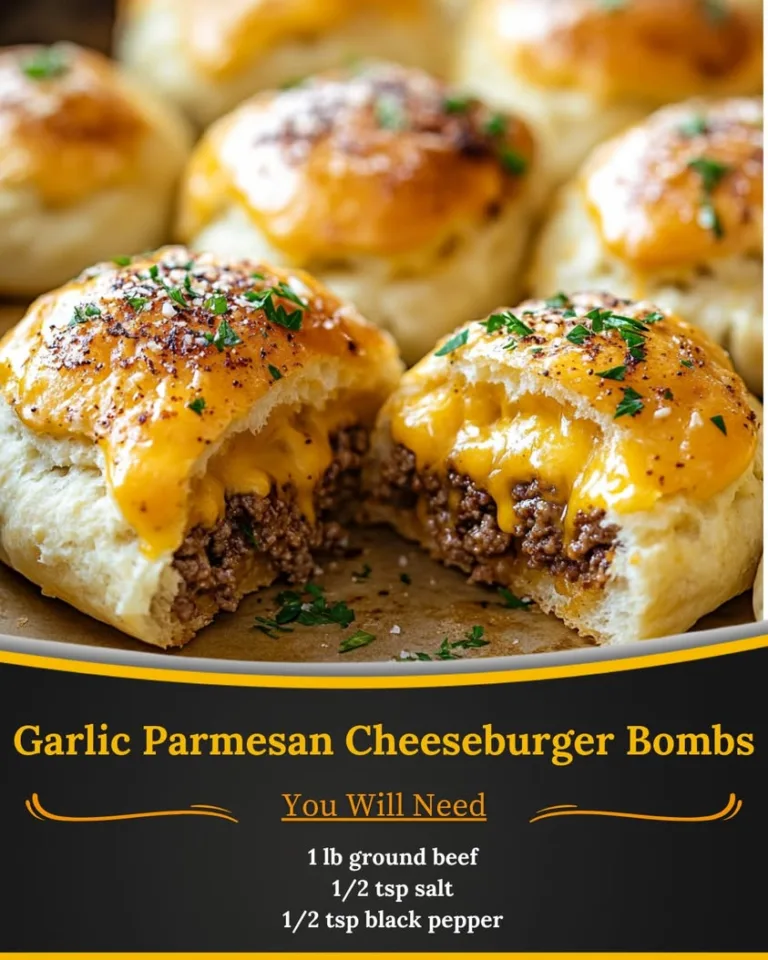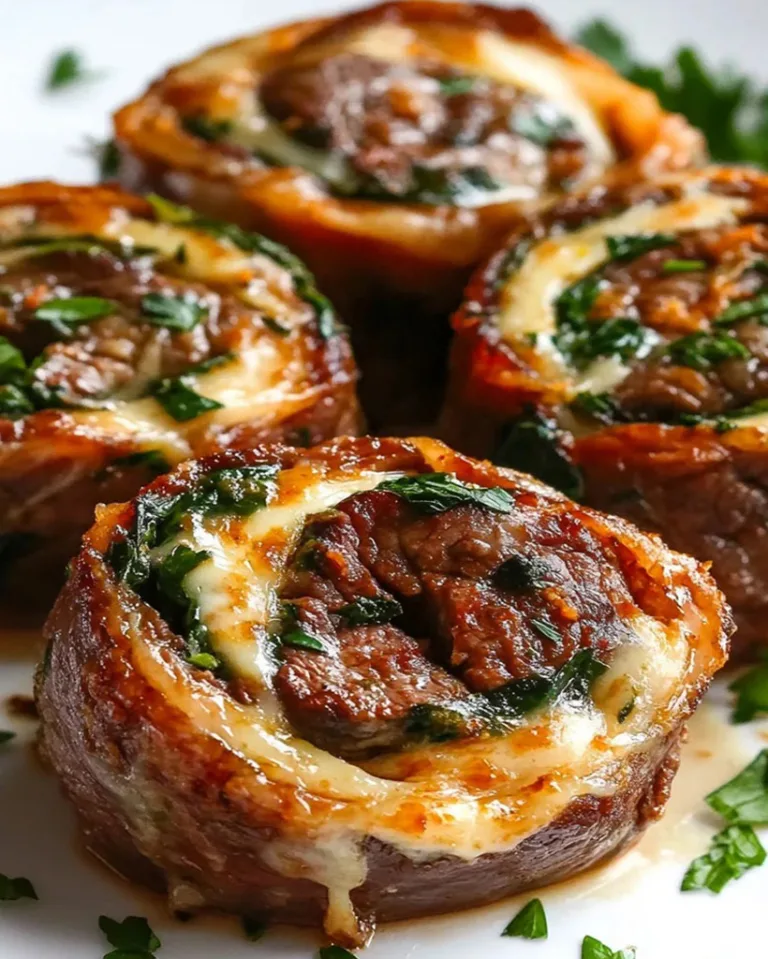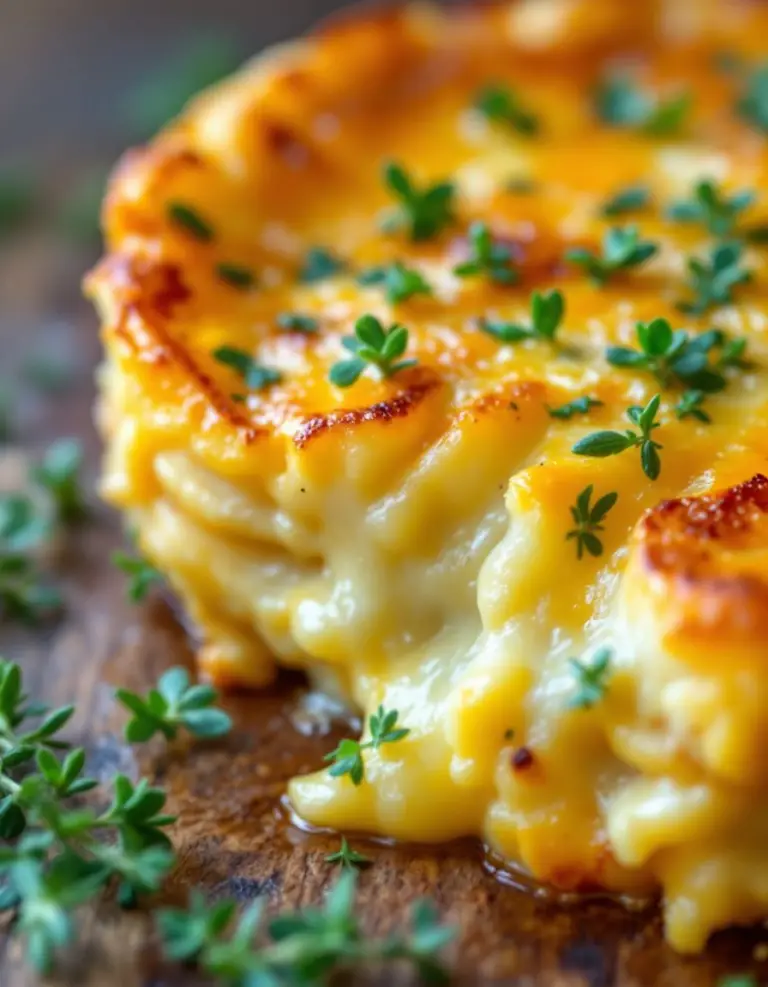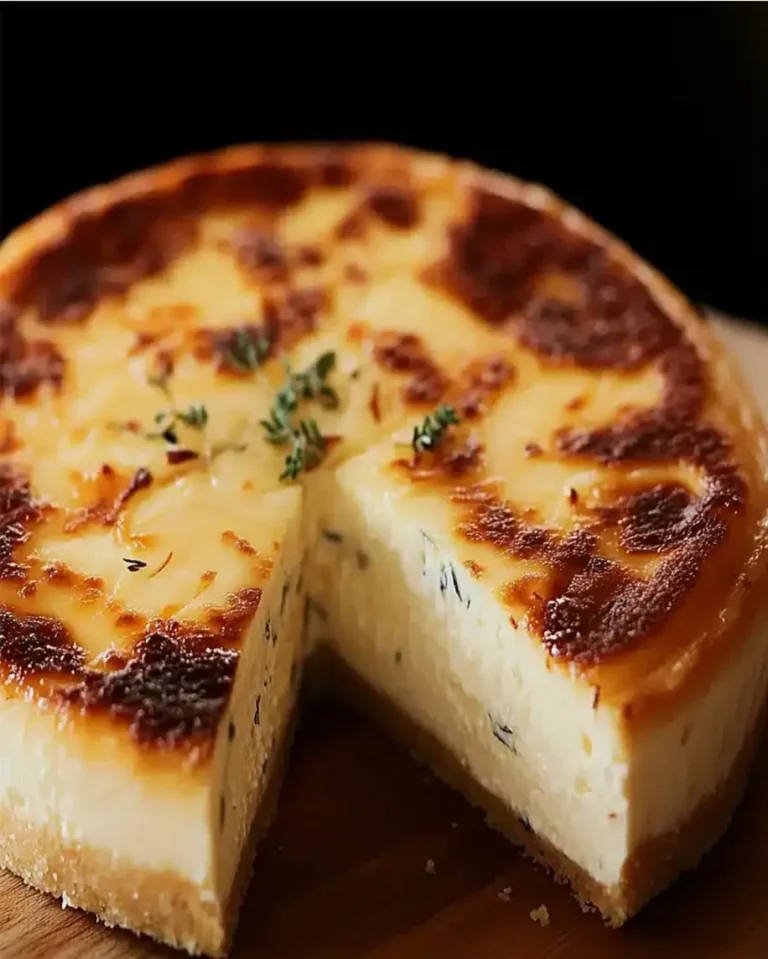Best Slow Cooker Beef Ragu – Rich, Flavorful & Family Favorite
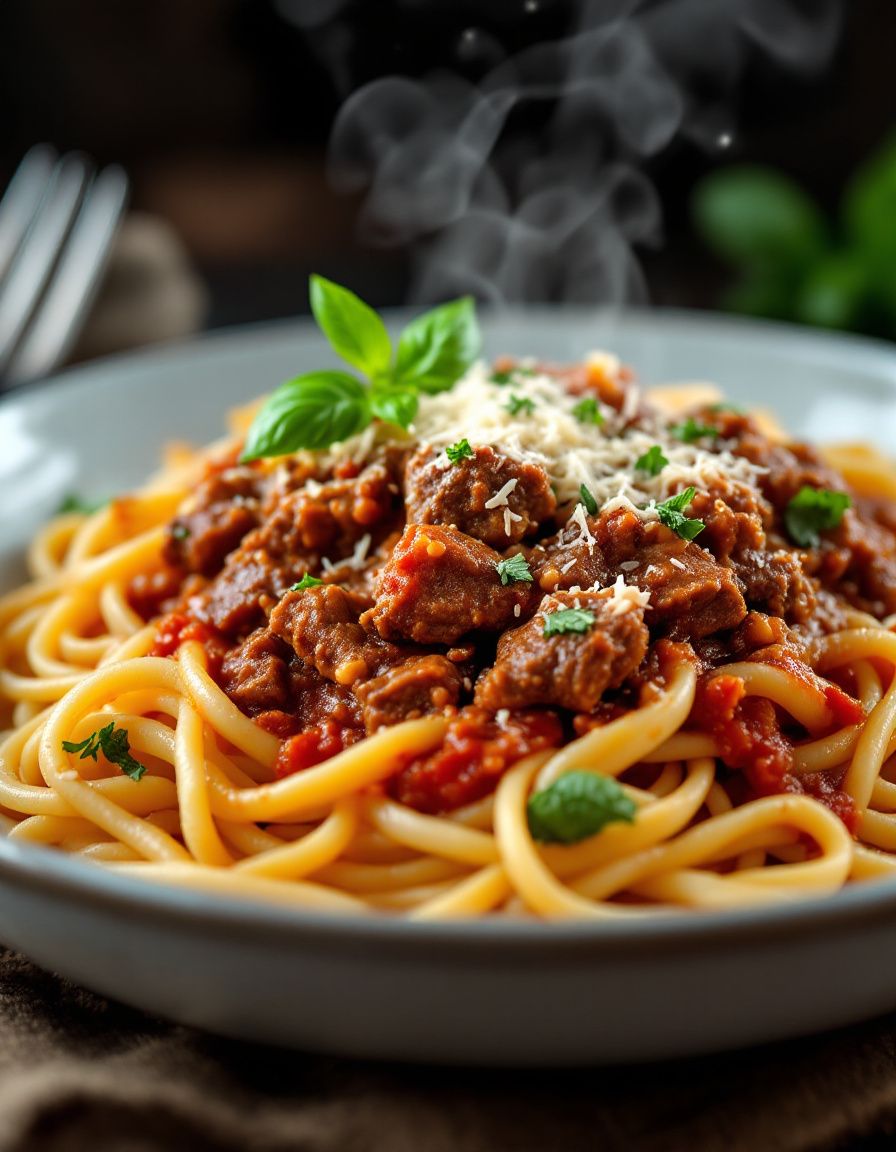
Slow Cooker Beef Ragu – The Ultimate Comfort Food!
Slow Cooker Beef Ragu is the epitome of ultimate comfort food. This rich and hearty dish combines tender, slow-cooked beef with a robust tomato sauce, served over your choice of pasta or polenta. The magic happens while you’re busy with your day; simply set it and forget it. As the flavors meld together in the slow cooker, you’ll be treated to a mouthwatering aroma that fills your kitchen, inviting loved ones to the table.
The beauty of Slow Cooker Beef Ragu lies in its deep, savory flavors and mouthwatering texture. Picture tender chunks of beef that melt in your mouth, enveloped in a luscious tomato sauce enriched with red wine, fragrant herbs, and a hint of garlic. Every bite is a harmonious blend of comfort and satisfaction, making it the perfect meal for family gatherings, cozy dinners, or when you need a little self-care after a long day.
Quick Recipe Highlights
- Flavor Profile: This ragu boasts a perfect balance of savory beef, rich tomatoes, and aromatic herbs, creating a depth of flavor that will leave you craving more.
- Texture: With melt-in-your-mouth beef and a thick, silky sauce, every bite is a delightful experience, whether you serve it over pasta or on its own.
- Aroma: As it cooks, you’ll be enveloped in an irresistible scent of garlic, herbs, and slowly simmering meat that promises a warm, inviting dinner.
- Visual Appeal: The vibrant red sauce flecked with herbs makes for an eye-catching presentation, whether served casually or elevated with garnishes.
- Skill Level Needed: This dish requires minimal cooking expertise, making it accessible for novice cooks and veterans alike.
- Special Equipment: A slow cooker is essential for transforming tough cuts of beef into tender, fall-apart pieces, infusing them with flavor over several hours.
Recipe Overview
- Difficulty Level: This Slow Cooker Beef Ragu is easy to prepare and requires little active cooking time, making it suitable for cooks of all skill levels.
- Category: Perfect for comfort food lovers, this dish aligns with hearty family meals or a cozy dinner for two.
- Cuisine: This recipe reflects Italian culinary traditions, showcasing the heart and soul of Italian home cooking with its use of fresh ingredients and slow-cooked methods.
- Cost: Depending on the cut of beef used, this dish can be made economically, making it ideal for meals on a budget without sacrificing taste.
- Season: While delicious all year round, this ragu is particularly comforting during the cold months, warming you up and nourishing your soul.
- Occasion: Ideal for weeknight dinners, holiday gatherings, or any occasion that calls for rich, hearty comfort food that pleases a crowd.
Why You’ll Love This Recipe
Slow Cooker Beef Ragu is not just a meal; it’s an experience. Each bite delivers a rich tapestry of flavors, with the beef simmered to perfection and infused with the sweet acidity of tomatoes. The texture is spectacular, with the beef breaking down to tender morsels, perfectly complementing the sauce. As the ragu cooks, the anticipation builds, and when it finally comes time to serve, the aroma invites everyone to gather around the table.
Convenience is another key reason to love this recipe. With just a few minutes of hands-on time in the morning, you can set your slow cooker and go about your day, returning to a meal that seems like you spent hours preparing. It’s the perfect solution for busy families or those who enjoy prepping meals in advance without compromising on flavor or quality.
From a nutritional perspective, this dish is a balanced choice. Packed with protein from the beef and complemented by the health benefits of tomatoes and herbs, it fuels and nourishes. Pairing it with a fresh salad or steamed vegetables can create a complete, wholesome meal that doesn’t skimp on satisfaction.
Socially, preparing a Slow Cooker Beef Ragu sets the stage for gathering and sharing. Imagine serving it at a dinner party, where guests can help themselves. The communal nature of sharing a warm pot of ragu fosters conversation, connection, and cozy camaraderie.
Moreover, this recipe is cost-effective. By utilizing inexpensive cuts of beef, you can feed a crowd affordably. The slow cooking method not only enhances the flavors but also makes the meat tender, transforming what could be a budget meal into a gourmet experience.
Historical Background and Cultural Significance
The origins of ragu can be traced back to ancient Italy, where combinations of meat, vegetables, and sauces were simmered to create hearty meals. Traditionally, this dish was developed to utilize tougher cuts of meat that required long cooking times to become tender. The slow cooking method allowed for flavors to develop deeply, making it a staple in many Italian households.
Culturally, ragu holds significant importance, especially in regions like Emilia-Romagna and Tuscany, where each family often has its own cherished recipe, passed down through generations. It symbolizes comfort and family gatherings, often serving as the centerpiece of Sunday dinners, special occasions, or holidays, reflecting the importance of shared meals in Italian culture.
As the recipe has evolved, numerous regional variations have emerged, each boasting unique twists. From the classic Bolognese to variations spiced with local herbs or accompanied by different types of pasta, the adaptability of ragu has led to a rich tapestry of regional culinary identities.
In modern times, the Slow Cooker Beef Ragu has made its way into contemporary gastronomy, blending traditional techniques with modern conveniences, allowing cooks everywhere to enjoy authentic flavors with minimal fuss.
Ingredient Deep Dive
– **Beef:** The star of the dish, traditionally tougher cuts like chuck roast work best for slow cooking. These cuts have the perfect balance of fat and meat, leading to an incredibly tender texture that holds up well in the sauce. Nutritionally, beef is rich in protein, iron, and B vitamins, making it a hearty part of the dish. When selecting beef, look for marbling for flavor, and always store it properly to prevent spoilage. If you need an alternative, consider using pork or even a meat substitute for a twist.
– **Tomatoes:** Fresh or canned tomatoes create the base of the sauce, offering a sweet acidity that enhances the beef’s flavor. Tomatoes are known for their antioxidant properties, particularly lycopene, which is beneficial for health. Always choose high-quality tomatoes for better flavor. If fresh tomatoes aren’t available, canned tomatoes are a great substitute. Store them in a cool, dark place, and once opened, refrigerate for freshness.
– **Red Wine:** Adds depth to the ragu, contributing to its rich flavor profile and enhancing the overall taste. A good quality red wine will not only help tenderize the meat but also add complexity to the sauce. When choosing wine, opt for one you enjoy drinking, as its flavor will concentrate in the ragu. It’s generally recommended to avoid cooking wines, which can contain salt and preservatives. Always store wine in a cool, dark place for longevity.
– **Herbs and Spices:** Fresh herbs such as basil, thyme, and bay leaves contribute to the aromatic profile, while spices like salt and pepper enhance flavor. Herbs not only elevate the taste but also add nutritional benefits, like anti-inflammatory properties. When selecting herbs, fresh is best, but dried herbs can be used in a pinch. Always store herbs properly to maintain flavor, and consider substituting based on what you have available or your personal preferences.
Common Mistakes to Avoid
- Overcrowding the slow cooker: It’s crucial not to overload your slow cooker. If the pot is too full, the meat won’t cook evenly. Aim for a two-thirds to three-quarters full slow cooker to ensure proper heat circulation.
- Skipping browning the beef: Browning the beef before adding it to the slow cooker develops flavors through caramelization. Don’t skip this step unless you’re in a rush—it makes a noticeable difference in taste.
- Not seasoning enough: Under-seasoning can lead to bland results. Be generous with salt and spices throughout the cooking process, adjusting to taste.
- Using low-quality ingredients: High-quality tomatoes, meat, and wine significantly impact the final flavor of your ragu. Opt for the best ingredients you can afford.
- Ignoring cooking time: Every slow cooker is different. Cooking times can vary based on the size of the meat pieces and the specific cooker. Check for tenderness and adjust timing as necessary.
- Adding too much liquid: The slow cooking method is great for tenderizing meat, but it also concentrates flavors. Too much liquid can dilute the flavor of your ragu; only add liquid if necessary.
- Not letting it rest: Allow your ragu to sit for a few minutes after cooking. This resting time helps the flavors meld and improves overall taste.
- Using pre-grated cheese: For the best flavor and texture, grate your own cheese before serving. Pre-grated types often contain anti-clumping agents that affect melting and flavor.
- Not adjusting seasonings at the end: After slow cooking, always taste the ragu before serving and adjust seasonings as needed. Flavors may mellow, and a little extra pinch of salt or herbs can elevate your dish.
- Not pairing with suitable sides: A hearty ragu deserves the right accompaniments. Opt for pasta, polenta, or crusty bread to soak up the delicious sauce!
Essential Techniques
– **Browning Meat:** Browning adds depth to the flavor and a richer color to the ragu. Heat oil in a skillet over medium-high heat, add beef in batches, and sear on all sides until browned. Avoid crowded pans; this may lead to steaming instead. Look for a deep golden-brown color for the best results.
– **Layering Flavors:** Start with the aromatics, such as onions and garlic, before adding tomatoes and wine. Each ingredient should be given time to release its flavors. Sautéing vegetables until soft allows their natural sugars to caramelize, enhancing the overall taste. Look for fragrant and tender components before proceeding.
– **Slow Cooking:** The essence of this recipe! For best results, cook on low for a longer time. This allows the connective tissues in beef to break down and become tender, resulting in a luxurious texture. Ensure your cooker is adequately filled and set to the appropriate time for the size of the cut.
– **Sauce Adjustments:** After cooking, taste and adjust the sauce before serving. Sometimes, a splash of red wine or a sprinkle of fresh herbs enhances brightness. Always aim for a balanced flavor profile, correcting acidity with a pinch of sugar if necessary.
Pro Tips for Perfect Slow Cooker Beef Ragu
1. Choose the right cut of meat—chuck roast or brisket works excellently for ragu. They become incredibly tender when cooked low and slow.
2. Don’t rush the browning step; the Maillard reaction is crucial for developing flavor.
3. Use a good-quality red wine for the sauce, as its flavor will concentrate throughout the cooking process.
4. Add vegetables like carrots and celery for extra sweetness and texture in your ragu.
5. After cooking, let it sit for at least 10 minutes to allow flavors to integrate before serving.
6. Use fresh herbs to garnish your ragu when serving to add freshness and a pop of color.
7. Pair with freshly grated cheese to enhance the dish’s richness and provide an attractive finish.
8. For a thicker ragu, remove the lid during the last 30 minutes of cooking to allow excess liquid to evaporate.
Variations and Adaptations
– **Regional variations:** In Bolognese tradition, a mix of ground meats is often used. Adapt your ragu using equal parts pork and beef for a richer flavor profile.
– **Seasonal adaptations:** In autumn, consider adding seasonal vegetables like pumpkin or butternut squash for a sweet twist.
– **Dietary modifications:** Swap beef for lentils or mushrooms for a vegetarian alternative that still provides a hearty texture.
– **Flavor variations:** Experiment with different spices like smoked paprika for added depth or crushed red pepper for heat.
– **Texture modifications:** For a smoother sauce, consider blending part of the ragu with an immersion blender just before serving.
– **Presentation alternatives:** Serve the ragu over sweet potato mash for a unique and visually appealing dish that balances richness with sweetness.
Serving and Presentation Guide
Present your Slow Cooker Beef Ragu beautifully by serving it over a bed of creamy polenta or spaghetti, creating a stunning contrast with the rich, red sauce. Garnish with fresh basil or parsley for a pop of color and freshness. A sprinkle of freshly grated Parmesan cheese adds flavor and sophistication.
When it comes to plating, use large bowls to allow for ample ragu and sauce, complemented with a side of crusty bread to soak up every last bit. Consider adding a fresh salad dressed in olive oil and vinegar on the side to balance the richness of the ragu.
Temperature is key—serve your ragu warm, ensuring the pasta or polenta is hot when plated to maintain the dish’s overall comfort. Finally, be mindful of portion sizes, allowing guests to serve themselves a generous helping without wasting.
Wine and Beverage Pairing
A robust red wine, such as Chianti or a full-bodied Merlot, pairs beautifully with Slow Cooker Beef Ragu, enhancing the meal’s flavors. Alternatively, consider a Syrah, as its bold fruit characteristics complement the dish well. If you prefer non-alcoholic options, consider a sparkling grape juice or carbonated water with a squeeze of lemon for a refreshing contrast.
For those who enjoy coffee or tea, a rich espresso provides a delightful finish to your meal, balancing the savory notes of the ragu. Ensure any selections are served at the correct temperatures—red wine slightly below room temperature, juices chilled, and coffee steaming hot.
Storage and Shelf Life
Store any leftover Slow Cooker Beef Ragu in an airtight container in the refrigerator for up to four days. For longer storage, consider freezing it in portioned containers, where it can last for up to three months. Reheat gently on the stove over low heat, adding a splash of water or broth if needed to restore the sauce’s consistency.
Signs of spoilage include off smells, discoloration, or mold formation. Always ensure your storage containers are clean and properly sealed to maximize freshness and prevent any contamination.
Make Ahead Strategies
For optimal convenience, consider prepping your Slow Cooker Beef Ragu ingredients the night before. Chop your vegetables and measure out spices, storing them in the fridge overnight. In the morning, simply brown your meat, combine everything in the slow cooker, and set it to low.
You can also prepare the ragu entirely a day ahead and let it cool before refrigerating. When it’s time to serve, reheat thoroughly on the stove, ensuring it reaches a safe temperature before plating. Fresh elements such as herbs or grated cheese can be added just before serving to keep the dish vibrant.
Scaling Instructions
Scaling your Slow Cooker Beef Ragu is straightforward. To halve the recipe, use a smaller cut of meat and adjust other ingredient measurements accordingly. For doubling or tripling the recipe, ensure you have a large-capacity slow cooker or consider preparing batches in separate cookers.
Keep in mind that cooking times may vary with larger quantities; always check for doneness by testing the meat’s tenderness. Additionally, ensure you have ample fridge or freezer space for proper storage of leftovers or portions.
Nutritional Deep Dive
Each serving of Slow Cooker Beef Ragu is rich in protein, thanks to the beef, providing a complete amino acid profile essential for muscle repair and overall health. The dish also boasts a supply of iron, particularly beneficial for energy levels, and a good source of various B vitamins, which play a crucial role in metabolic functions.
Additionally, tomatoes contribute antioxidants and vitamins C and K, supporting immune and skin health, while herbs provide flavor along with potential health benefits, including anti-inflammatory and antioxidant properties. When served with pasta, the dish becomes a balanced meal with carbohydrates for energy, making it ideal for those needing a fulfilling dish.
Portion control is essential, especially when paired with pasta, to manage calorie intake. However, in moderation, this dish can fit well into a balanced diet, promoting satisfaction without excess.
Dietary Adaptations
For gluten-free options, serve the ragu over gluten-free pasta or polenta. To make it dairy-free, skip the cheese or use a vegan alternative. For a vegan twist, substitute beef with lentils or mushrooms for a hearty, plant-based ragu.
If you’re looking for a low-carb choice, serve the ragu over zucchini noodles or cauliflower rice. For those following a ketogenic or paleo diet, ensure all ingredients align with their guidelines, primarily focusing on real, unprocessed foods.
Be mindful of FODMAP considerations; the recipe can be adjusted by omitting high-FODMAP ingredients and replacing them with suitable alternatives like canned tomatoes and herbs to remain compliant without sacrificing flavor.
Troubleshooting Guide
If your ragu turns out too watery, try simmering it uncovered for a while to let excess liquid evaporate. A flavor imbalance can often be corrected by adding salt or a splash of acid, like vinegar or lemon juice.
Texture issues, such as tough meat, usually indicate that it hasn’t cooked long enough. Ensure your slow cooker is set to the right temperature and allow extra cooking time if necessary.
If you’re having equipment challenges, ensure your slow cooker is functioning correctly, as varying brands can impact cooking times. Lastly, if you need to substitute ingredients, adjust seasonings as required to maintain flavor profiles.
Recipe Success Stories
Our community loves sharing how they’ve adapted the Slow Cooker Beef Ragu to their tastes and dietary requirements. Many readers have successfully substituted various meats, like turkey or chicken, or adapted the recipe for vegan diets using lentils or jackfruit.
One reader celebrated a family reunion where this ragu became the highlight of the meal, sparking discussions about family recipes and traditions. The ease of preparation has encouraged many to involve their kids in the kitchen, fostering a love for cooking from a young age.
A few readers have also shared their photography tips, suggesting natural lighting and minimal clutter in the background to showcase the dish beautifully. Each success story is a testament to the dish’s versatility and universal appeal.
Frequently Asked Questions
Can I freeze Slow Cooker Beef Ragu?
Yes, you can freeze Slow Cooker Beef Ragu! Allow it to cool before transferring it to airtight freezer-safe containers. It can last for up to three months in the freezer. When ready to enjoy, simply thaw overnight in the fridge and reheat on the stove.
What is the best cut of beef for ragu?
Chuck roast is often the preferred cut for Slow Cooker Beef Ragu due to its ideal fat content and connective tissue, making it tender and flavorful after long cooking. You can also use brisket or round cuts if preferred.
How can I make it spicier?
Add crushed red pepper flakes, or diced jalapeños to the sauce during the cooking process. You can also use spicy Italian sausage in place of some of the beef for a kick.
Can I make this ragu in a regular pot?
Absolutely! If you don’t have a slow cooker, you can make it on the stovetop. Simply simmer on low heat for about 2-3 hours, stirring occasionally until the meat is tender.
What should I serve with my ragu?
Slow Cooker Beef Ragu pairs beautifully with pasta like tagliatelle or pappardelle, creamy polenta, or even mashed potatoes. Don’t forget to serve it with a side of crusty bread!
Can I add vegetables to the ragu?
Yes! Chopped carrots, celery, or bell peppers can be added at the beginning of cooking. They will enhance the flavor and provide nutritional benefits.
How do I store leftovers?
Store any leftovers in an airtight container in the refrigerator for up to four days. Be sure to reheat thoroughly before serving.
Is it necessary to brown the meat before cooking?
While not strictly necessary, browning the meat before adding it to the slow cooker deepens the flavor of the ragu and results in a more complex dish.
Can I use ground beef instead of chunks?
Yes, ground beef can be used, but the texture and cooking time will change. Ground beef typically requires less cooking time and results in a different final consistency.
How do I know when ragu is done?
The ragu is done when the meat is fork-tender and shreds easily. Cooking times may vary based on the size of your meat and the specific slow cooker used.
Additional Resources
Explore related recipes such as tomato sauce variations, pasta side dishes, or rustic bread recipes to complete your meal. Additionally, look into technique guides for perfecting your slow-cooking skills or ingredient information related to herbs and spices that elevate your dishes.
Equipment recommendations for slow cooking can also provide insights into the best models available or accessories that enhance your cooking experience. Seasonal variations on ingredients may inspire new takes on your favorite recipes and encourage you to try new cooking methods.
Join the Conversation
We invite you to share your own experiences with Slow Cooker Beef Ragu. What variations have you tried? How has the dish become a favorite in your home? Upload your photos and tag us on social media to join our community of food lovers!
Photography tips to capture your cooking journey can help inspire others, while sharing your personal recipe reviews fosters community engagement. We also encourage you to discuss your recipe adaptations and suggestions with fellow readers and creators.
The Recipe
Slow Cooker Beef Ragu
Serves: 6
Prep Time: 15 mins
Cook Time: 8 hours
Total Time: 8 hours 15 mins
Kitchen Equipment Needed
- Slow Cooker
- Skillet
- Cutting Board
- Knife
- Measuring Cups and Spoons
- Wooden Spoon or Spatula
Ingredients
- 2 lbs beef chuck roast
- 1 medium onion, diced
- 3 cloves garlic, minced
- 1 can (28 oz) crushed tomatoes
- 1 cup red wine
- 2 carrots, diced
- 2 celery stalks, diced
- 2 tsp dried basil
- 1 tsp dried oregano
- Salt and pepper, to taste
- Fresh parsley, for garnish
Directions
- In a skillet, heat a tablespoon of oil over medium-high heat. Brown the beef on all sides, then transfer to the slow cooker.
- In the same skillet, add diced onion, carrots, and celery; sauté until softened, about 5 minutes.
- Add minced garlic and cook for another minute until fragrant.
- Pour in red wine, scraping the bottom of the skillet to release any flavorful bits. Bring to a simmer.
- Transfer the mixture to the slow cooker, add crushed tomatoes, dried herbs, salt, and pepper.
- Cover and cook on low for 8 hours, or until the beef is tender and easily shredded.
- Before serving, taste and adjust seasonings. Serve hot over your choice of pasta or polenta, garnished with fresh parsley.
Recipe Notes
- For a thicker sauce, remove the lid for the last hour of cooking to allow excess liquid to evaporate.
- Feel free to substitute the beef for lentils or mushrooms for a vegetarian version.
- Leftovers can be stored in the refrigerator for up to 4 days or frozen for up to 3 months.

